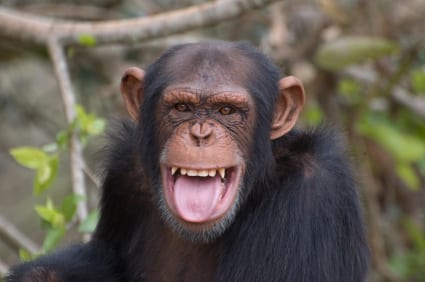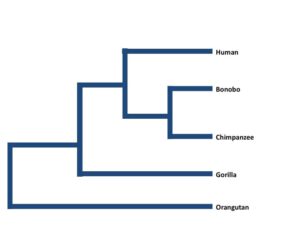
Great apes really do giggle when tickled, new research says – just like you and me.
What’s So Funny
Researchers from the University of Hannover in Germany recorded the tickle-induced vocalizations from three human infants and 21 infant and juvenile orangutans, gorillas, chimpanzees and bonobos and analyzed this acoustic data to find similarities and differences among the five species.
Their results, published online today in the journal Current Biology, show that not only are the hoots, hollers and snorts of the great apes really laughter, but the evolutionary relationships between the sounds match up with the known evolutionary relationships between the species based on genetics.
“At a minimum, one can conclude that it is appropriate to consider ‘laughter’ to be a cross-species phenomenon, and that it is therefore not anthropomorphic to use this term for tickling-induced vocalizations produced by the great apes,” the authors write.
Tickling
But the researchers’ findings also indicate something more profound: rather than being a uniquely human invention, tickle-induced chuckles can be traced back 10 to 16 million years to our last common ancestor with the great apes. Analysis of the chortles of a lesser ape, the siamang, suggests that laughter may be even older.
 The tree based on laughter matches the genetic tree.
The tree based on laughter matches the genetic tree.
Despite the all the similarities the researchers found between humans and the great apes, the fact remains that human giggles are distinct — we mostly laugh while exhaling and our vocal chords vibrate to make the “ha ha ha” sounds, while ape snickers are more of the in-and-out panting variety. The question for future research to answer is why particularly human features emerged and what functions they may have served as laughter became a large part of human social interaction.
Insanely cute video of giggling chimps here.



